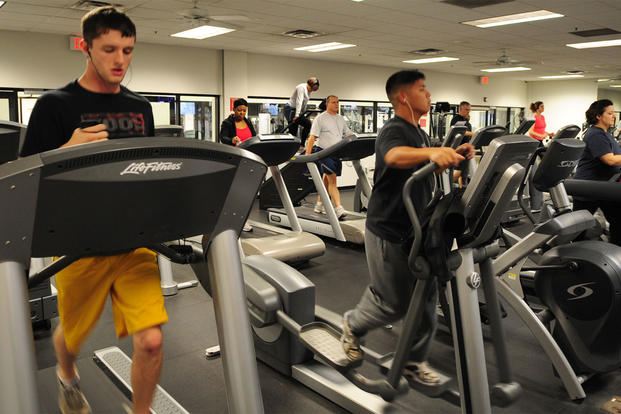Many tactical professionals (military, police, firefighters) build a history of injuries, and these can be the difference when it comes to being active when you get into your 40s and 50s, and beyond.
If you are still highly active and have spent many years in tactical professions, you are likely very smart with your training. Or you might be very lucky; many tactical athletes require new joints (hips, knees) and other surgeries after many years in dangerous jobs with a high potential for injury. Traumatic and overuse injuries take their toll on the tactical athlete.
Depending upon your injury history, it would be great to do what you could when you were 20. By properly learning how to address overuse injuries before they occur and actively pursuing recovery and maintenance, you might be that old guy still getting after it in the future.
Building a mobility day off or pursuing non-impact cardio options instead of hard running every day can add to your longevity -- especially if you start taking your joints into consideration when you are in your late 20s and 30s.
Having multiple non-impact cardio options to master during the year can make all the difference. See my story about my body almost “breaking” by age 27 and the following 20 years of periodization training.
If a day off is not in your vocabulary, you may like the idea of a Mobility Day Off. Adding a combination of cardio, resistance, mobility and active recovery days into the middle of the week after a tough 2-3 days of training is an option. Or you can be flexible and add in the mobility day off when you feel you need it -- maybe once every other week.
A personal favorite of many aging athletes is the non-impact cardio/foam roller/stretching day. For instance, on Thursday, after a tough three days prior, consider the following:
Repeat five times
- Five minutes of bike, row, elliptical or swim
- Five minutes of stretching or foam rolling
If you have a pool, you also can add in the treading and dynamic stretching in chest-deep water. Ten to 15 minutes of treading and moving in the water is therapeutic and will help make the following days of your week’s challenges much more competitive.
If you are training hard, every decade of life requires some mobility and recovery days. If these recovery days are not part of your planning, you should consider adding a recovery day midweek. You will feel better and see your performance improve. Otherwise, the inevitable overuse injuries will start to catch up to you. Do not mistake youth with invulnerability. Learn how to train for longevity now.
In some circles, wise and active people say that if you are in your 20s, you need to train like you are in your 30s. If you are in your 30s, you need to train like you are in your 40s and so on. This mentality does not agree completely with the life of the tactical athlete, because the physical job requirements are different than the average athlete. It is understandable, though.
But there are days when you need to train like you are older. If you do this (with some luck), one day you will be capable when you are older and will still have many of the same abilities that you have when you are young.
Old age eventually will win out over youthful enthusiasm. But if we plan accordingly and are more thoughtful and strategic in how we train and recover, we can keep going into each new decade.
That is really the crux of this. It takes proper planning and education and understanding if you want to remain successful as a tactical athlete after 40 years of age. That is why I highly recommend the National Strength and Conditioning Association’s Tactical Strength and Conditioning program.
There are tactical fitness books that are based on this periodization format. I am working on my next book, which should be out this month: "Tactical Fitness for the Athlete over 40 — Actively Pursuing Recovery and Healthy Maintenance."
Another option is the Maximum Fitness book. It was an advanced 52-week training cycle with all four quarters (13-week cycles) focusing on all the elements of fitness spread throughout the year. The book, Tactical Fitness, also is a very challenging program and a little more advanced.
The Dirty Dozen Tactical Fitness Test gauges all the elements of fitness. It has workouts for your upper body, lower body, full body, cardio and core, applied in a tactical testing format. The books focus on all the elements of fitness: strength, power, muscle stamina, speed, agility, endurance, mobility and flexibility arranged throughout the year so you do not burn out on any one element of fitness.
If you want to stay strong, keep lifting. Tactical Strength is a book about pure lifting, speed and agility, with a moderate cardio cycle (plenty of non-impact options). It focuses primarily on strength and power. It also has some fast cardio, with some limited impact cardio.
If you want to read more about periodization and designs to help you recover, improve performance and build a body for longevity, check out the related articles from the Military.com Fitness Archives:
More about periodization:
- Periodization Training
- Periodization — Do I Need It?
- Periodization Advice
- Multi-Sport Athlete Periodization
- Summer-Fall Transition
Stew Smith is a former Navy SEAL and fitness author certified as a Strength and Conditioning Specialist (CSCS) with the National Strength and Conditioning Association. Visit his Fitness eBook store if you’re looking to start a workout program to create a healthy lifestyle. Send your fitness questions to stew@stewsmith.com.
Want to Learn More About Military Life?
Whether you're thinking of joining the military, looking for fitness and basic training tips, or keeping up with military life and benefits, Military.com has you covered. Subscribe to Military.com to have military news, updates and resources delivered directly to your inbox.



















